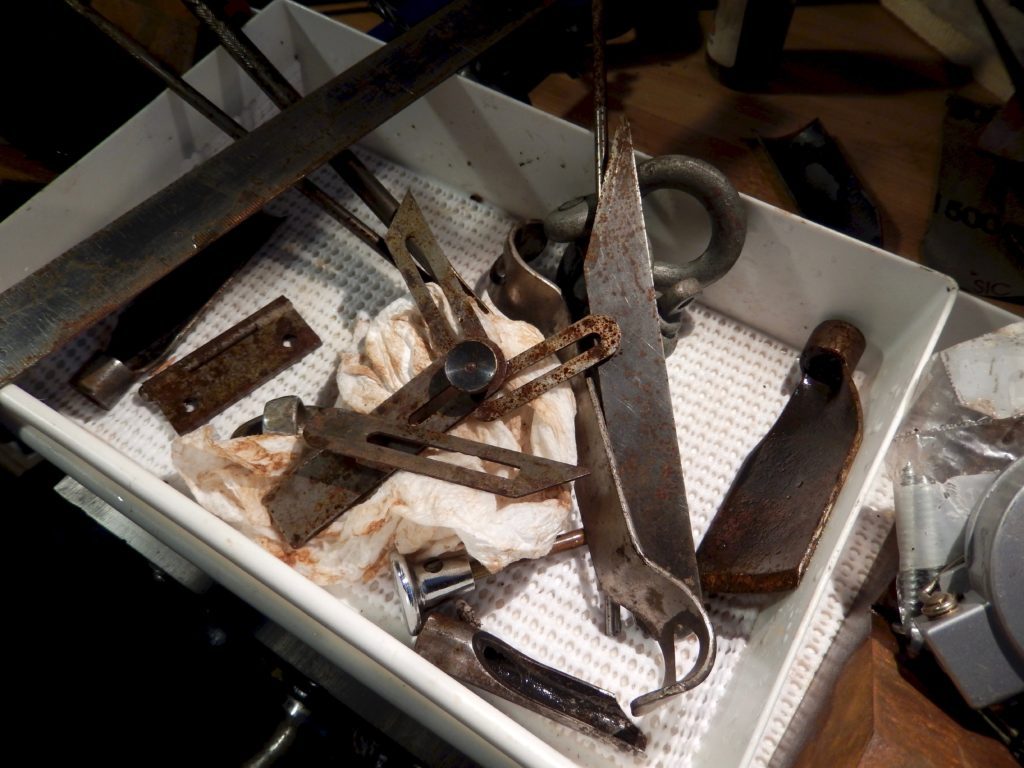We may receive a commission when you use our affiliate links. However, this does not impact our recommendations.
I prefer using vintage hand tools whenever possible and I buy a lot of those tools from specialty tool dealers who know how to find quality tools. I also buy a lot from antique stores and flea markets. It is this area of the hobby that I wanted to address here.
Buying from tool dealers is an almost certain proposition. If you buy from a trustworthy source, you’re going to get what you’ve ordered, it will not have any “gotcha” surprises, and it should be able to be used after whatever level of work the dealer said it would need. Buying from antique or junk dealers is anything but a certain proposition but, most of the time, you can find good quality tools at a lower price than you would spend with a specialty dealer.
In order to ensure you’re spending your money wisely, I’d like to offer the following tips to you. Keep these in mind when you’re out and about hunting rust the next time.
Scan Then Dig
I have a patent pending (OK, not really) system for rust hunting in antique stores and flea markets. I like to walk the entire place quickly, scanning each booth for likely targets before committing to digging into any one spot. Time is of the essence when on the hunt and I don’t want to waste a second digging through doilies or old Bell Jars to find one tool when a booth with many tools might be just one row over. The “Scan Then Dig” method eliminates this and gives you a good feel for what is around you.
I’d like to point out that, over time, you’ll develop a gut feeling for what each booth will contain. This insight comes with experience. Rarely will you find an interesting tool in a booth laden with glassware, homemade crafts, or objet d’art featuring velour paintings of Elvis and/or canines. Shop smart, not hard.
Examine Every Inch
When you find the good stuff, look over every inch of the tool. Cracks in old cast iron, saw plates, and chisels can be fatal for a user tool. Insidious defects can hide behind rust or old paint, not to be noticed until after you’ve given over your hard earned cash. Look carefully, examine every piece and part of the tool in question before paying up.
If a tool is truly grungy and you need to get a better look, remember than saliva is a near universal solvent. Lick your thumb and rub the dirt away to study that potential crack. Just remember which thumb you used the last time so that you don’t get a mouthful of old rust, dirt, and mouse droppings.
Remember: You’re Buying a Tool, Not a Story
I love buying tools from family members who have memories of their loved one working with the tools. I’ve bought two complete toolboxes from the grandchildren of craftsman and I take pleasure in knowing the backstory. That said, a lot of the stories you’ll here are just that. Take the tales with an appropriately large grain of salt.
There are, of course, many other tips and tricks for tracking down old tools. Some of my best ones will appear on this blog in future posts. In the meantime, get out there and find some great stuff in 2019. Tools with the potential to give you shimmering planed surfaces, smooth rip cuts, and finely chopped dovetails are out there just waiting to be rescued.

A collection of rescued tools. (Photo Credit: Yoav Liberman, “Treasure Hunting & the Restoration of a Starrett Sliding Bevel”)
Here are some supplies and tools we find essential in our everyday work around the shop. We may receive a commission from sales referred by our links; however, we have carefully selected these products for their usefulness and quality.








